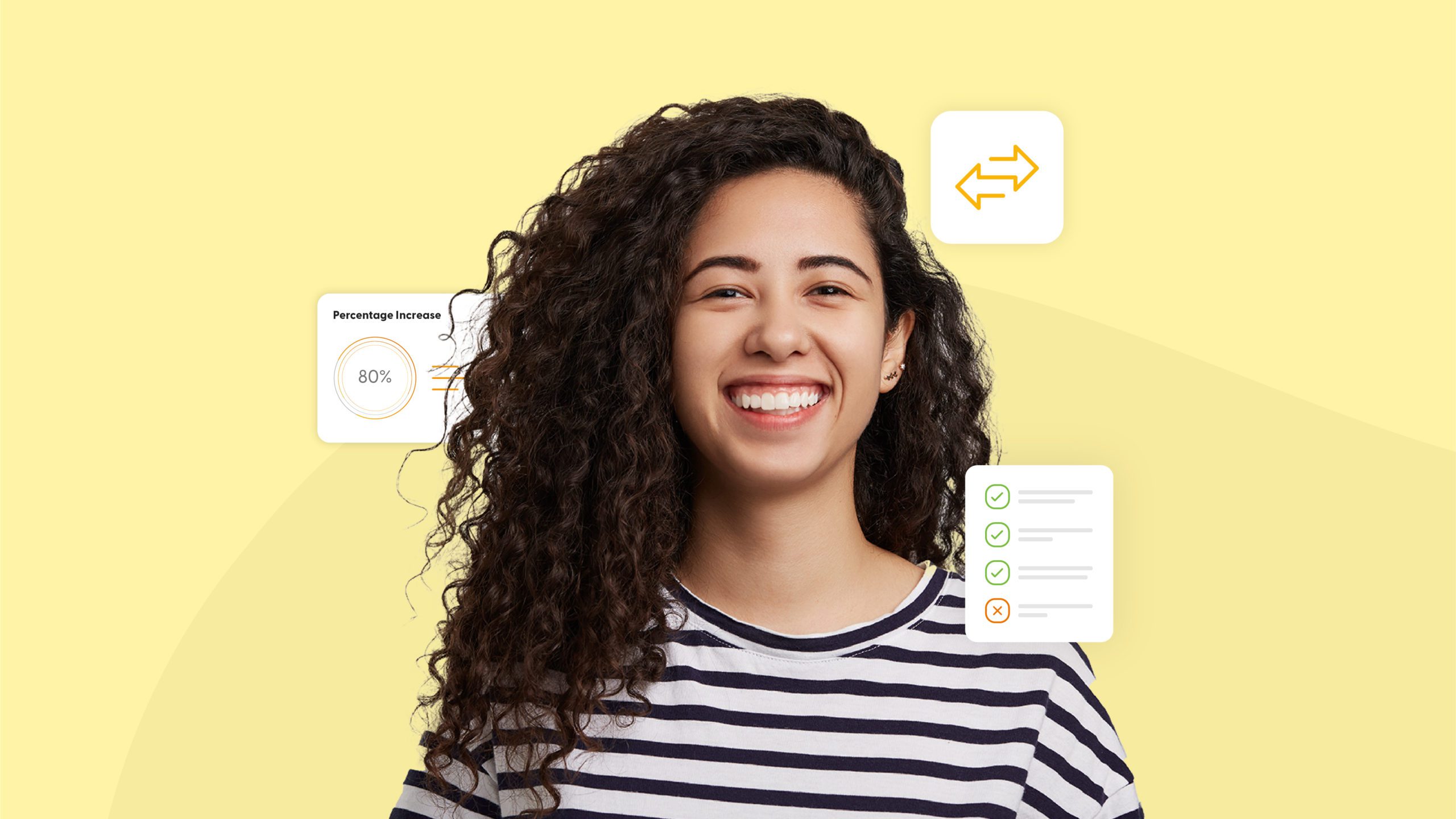Learning is only as effective as its influence. 🧠
How much have learners taken away from the programme?
The knowledge they’ve acquired. The existing skills they’ve built on. The enhanced value it brings to your organisation.
Let’s say you’ve invested significant resources into designing and implementing a learning programme.
One that you hope will elevate and propel teams to greater heights. It was delivered without a hitch. Feedback showed that attendees were engaged. 100% of attendees saw it through to the end, completing the whole learning programme. Attendees were nothing but complimentary; you even had plenty of sign-ups for the next course.
And then…you have a rude awakening.
The post-training evaluation reveals that your training course landed like a damp squid.😩
It was DOA. Attendees who seemed so engaged throughout the training returned to their desks and immediately slipped back into bad habits. Any impact has been negligible. And the C-suite wants to know why.
What do you know?
Wipe the slate clean. Go back to work with your tail between your legs. Push the whole experience to the back of your mind, never addressing what went wrong.
No. Now’s the time to talk about learning transfer.👇
What is learning transfer?
We’d all agree that the point of learning is to attain knowledge and skills that we can then use in problem-solving circumstances.
Think of learning the Pythagoras Theorem at school. How would you calculate the length of one side of a right-angled triangle when you know the lengths of the other two? Use the Pythagoras equation. The square of the hypotenuse is equal to the sum of the other two sides, or a2 + b2 = c2.
For a less, well, 2000’s “school” example, consider how to use Microsoft Excel to do calculations. First, type the = sign into the field. Then open the brackets. Type your calculation, e.g., 5*7. The close brackets Excel will automatically calculate the answer for you. (Spoiler alert: It’s 35)
Being able to apply what you have learned, i.e., a2 + b2 = c2, to calculate the length of a triangle when you know the lengths of the other two or how to use Microsoft Excel to calculate amounts, is a learned process.
The application of that process to get the answer to your questions is the learning transfer.
So, in L&D, if you’ve identified a goal to upskill a particular team or department within your organisation, Let’s say, for example, that you want to leverage Monday.com to manage workloads more efficiently, to drive real behavioural change, and to boost performance through training.
The learning transfer would be how confident the team or department is in using Monday.com post-training and how confident they are in opening the platform and automatically managing their workload, how much time they’ve saved, and how great the benefits are to your organisation.
So, imagine that you’ve invested significant resources—time and money—into L&D, upskilling teams and departments. You’ll want to know how successful your investment has been, right? 🤔
The question is: can you afford to overlook learning transfer if you want to run a team, department, or business that performs well? Not really.
The Steps of Learning Transfer
There are different steps to learning transfer. By following each, you can maximise engagement and retention within a working environment in real time.
This will ensure that what’s learned during L&D translates to enhanced workplace performance for all participants.
The typical steps involved in learning transfer are as follows:
1️⃣ Step One: Preparation and readiness
The first step is to be sure that all learners are ready and willing to learn. Communicate the relevance and importance of the training to learners’ job roles. Set clear learning outcome expectations, including how to apply them to workplace situations.
2️⃣ Step Two: Engagement and active learning
Deliver engaging and interactive training experiences for learners. Encourage participation and practice. Use a variety of learning methods to optimise the learning experience for attendees with different learning styles.
3️⃣ Step Three: Understanding and Comprehension
Ensure that learners understand the concepts, skills, and information that they’re being taught. Provide opportunities for learners to ask questions and seek clarification when needed.
4️⃣ Step Four: Application and Practice
Include real-world scenarios, case studies, simulations, and role-playing exercises to help learners apply the knowledge they’ve acquired. Promote a healthy environment where learners feel encouraged to ask questions, experiment, and make mistakes.
5️⃣ Step Five: Feedback and reflection
Provide timely and constructive feedback on learners’ performance during practice activities. Encourage learners to reflect on their learning experiences and how they can apply what they’ve learned in a workplace environment.
6️⃣ Step Six: Transfer strategies
Teach learners specific strategies to boost effective learning transfer in workplace environments. This could involve creating action plans, setting goals, and identifying opportunities for application.
7️⃣ Step Seven: Manager and peer support
Involve managers in the training process by communicating the training content and expected outcomes. Encourage managers to provide support, coaching, and reinforcement to learners when they come to apply what they’ve learned to their role.
8️⃣ Step Eight: On-the-Job Application
Encourage learners to immediately apply what they’ve learned to the day-to-day tasks of their role. Provide ongoing opportunities for practice to solidify learning and build confidence.
9️⃣ Step Nine: Continuous learning and improvement
Promote a culture of continuous learning, encouraging learners to seek new challenges and build upon existing skills. Provide follow-up training and resources to support ongoing development.
🔟 Step Ten: Measurement and Evaluation
Employ evaluation methods to assess whether the learning has been effectively transferred to day-to-day performance. Measure performance improvements, behavioural changes, and the impacts on business outcomes.
1️⃣1️⃣ Step Eleven: Feedback Loop and Iteration
Gather feedback from learners, managers, and stakeholders to refine the training process and make improvements for future learning initiatives.
Remember: learning transfer is an ongoing process, and it therefore requires a collaborative effort between learners, training providers, managers, and the organisation as a whole. Effective learning transfer leads to improved job performance, increased employee engagement, and better organisational outcomes.
The Four Types of Learning Transfer
There are four principal types of learning transfer. They describe how knowledge, skills, and behaviours acquired in one context are applied to another. So, basically, these types of learning transfers describe how L&D training can be applied to workplace performance.
Understanding the different types of learning transfer means that people and organisations can optimise and leverage learning for maximum results.
The main types of learning transfer:
- Near transfer is when knowledge and skills are learned in one situation and then directly applied to another situation, one that’s identical or has a very similar context. The similarity of both the learning context and transfer situations makes for a straightforward transfer. E.g. learning mathematical skills in school and then completing a test to demonstrate knowledge 👈
- Far transfer is the term for when learned knowledge and skills are applied to a dissimilar situation from the learning context. The success of this transfer hinges on learners being able to recognise and adapt principles or skills to new or unfamiliar situations. E.g., applying critical thinking skills learned during a philosophy course to solve complex, real-world problems in a professional setting. 👈
- Positive transfer is when prior learning experiences enhance or improve the learning and performance of new tasks or skills. Knowledge and skills from the original experience positively influence current performance. E.g. someone who has already learned to play the violin may find it easier to play the cello. 👈
- Negative transfer occurs when prior learning interferes with or hinders how learners perform when learning new skills to perform tasks. Previously acquired knowledge and skills cause learners’ confusion as they struggle to separate which actions are needed to reach goals. E.g. when someone who is proficient in driving an automatic car suddenly switches to a manual transmission, they may experience operating procedure negative transfer. 👈
Why is learning transfer important in the workplace?
There are several reasons why learning transfer is important in the workplace.
Simply put, learning transfer will elevate your workplace, creating an environment for everyone to grow.🚀
Keep reading below to learn more about the specific benefits of upskilling your workforce.👇
Develop new, better skills.
Learning transfer is crucial to acquiring and building on new and existing skills in the workplace. A highly skilled workforce is a highly capable workforce. Knowledge and skill retention are paramount to successful upskilling. And this will propel an organisation to meet targets and achieve its ambitions. 📈
Cultivating a positive workplace environment
Employees who recognise how much an organisation has invested in them are likely to be happy, productive, and loyal.
Of course, an organisation that offers L&D opportunities, and monitors employee performance after the training has been completed, will cultivate a positive workplace environment. One that demonstrates key stakeholders and senior management care about the career progression of everyone who works at the organisation. 😄
Achieving organisational goals
By promoting an organisation-wide L&D ethos, one that creates and builds on existing skills within the organisation is one that will achieve organisational goals.
From leadership to digital proficiency, organisation to interpersonal, evaluate knowledge and skills and upskill people and an organisation will build strong foundations to help them achieve their goals. 😄
Performance assessment
Learning transfer can provide valuable insight into performance assessment. Colleagues can share their experiences, expectations, and successes. Accountability metrics can then be put in place to create a transparent and honest working environment.
So, for example, if someone working in a warehousing facility undertakes manual handling or equipment operation safety training, their performance and health can be compared before and after completion to measure the effect that the training has had. 📈
Summary
Once you understand learning evaluation in all its forms and how you tailor it to different circumstances, you’ll gain valuable insight into organisation-wide performance and be able to optimise teams, departments, and the whole business to reach your goals.
Interested in learning more?
Get in touch with Thirst today, and you’ll be able to leverage ground-breaking AI technology and a learned methodology to help your business thrive.
Our AI-powered learning platform empowers L&D professionals to accelerate their learning culture, talent acquisition, leadership and development, and internal mobility.
What does this mean for you? An optimised L&D evaluation experience. Book a demo today.
For more e-learning insights, resources and information, discover the Thirst blog.
You may also enjoy:
7 Ways to Improve Your Learning Culture | A Comprehensive Guide to Learning Evaluation Models | LXP vs. LMS: What’s the Difference? (2025 Guide)







